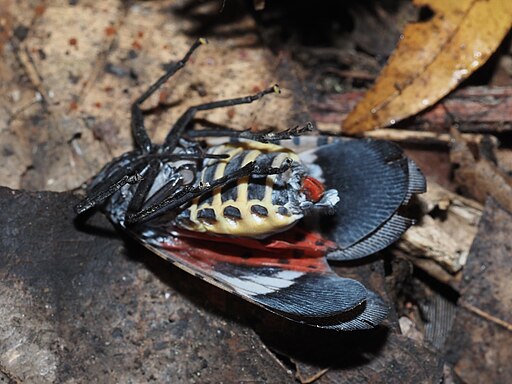
Y’all know about spotted lanternflies, right? I don’t have to explain them? (invaders, hordes over-running the landscape, even government officials say to just kill ’em?) Last summer I had a lot of them and I killed every one I was able to kill, given that they’re fast and cunning. This summer, the tree guy inspected my 2 red maple trees — maples are among spotted lanternflies’ top choices for setting up camp. I went outside to ask what the tree guy found, and he told me with some excitement that my property was the only one he’d inspected that had no spotted lanternflies. Not only that, but also not even any egg masses.
This turns out to be not strictly true: the same day I saw a spotted lanternfly on the outside of a window screen three stories above pavement so I couldn’t get to it. And two days later, I saw several more in the maple tree and around thereabouts. And I just now killed one in my house. But never mind because good news, even if temporary, is still heartening; like, it gives you heart. Plus as a savage predator, I enjoy it: grab the flyswatter, smack, it drops, track it down, smack smack smack smack, dead as a doornail, VENGEANCE IS MINE!
Flyswatters work and the reason I know is that the neighborhood kids use them; I buy them, they use them. Back to the tree guy: I think the kids are the reason he found (relatively fewer) of them — in fact, the minute he told me that, the heavens opened and I had an epiphany.
Last summer, as I say, I had tons of them. They crawl, they run fast, they leap unexpectedly. They are oddly beautiful: elegant black and white in an early stage, red and black in the next, quite Art Deco; and the mature phase, subtle browns and pinks over bright red. But there are way way way too many of them, and bugs in great numbers are horrifying, and the government says to kill ’em. As it turned out, the neighborhood kids — two of them, sisters who ordinarily treat each bug with loving and curious tenderness except when they don’t — are happy to revert to their inner predators. Last summer they were going through a stage of climbing trees. And while up in that red maple, they’d see spotted lanternflies.
The older one would yell, “Flyswatter! flyswatter!” and the younger one would scream and climb down and run get the flyswatter hanging from my porch shutter, and run back and hand it up to the older one. And the older one would swat the lanternflies and when tree branches got in her way, she’d keep swatting anyway, smack smack smack smack. And the branches were roiling and leaves were falling, and the lanternfly would try to get away and she’d have to move to another branch, smack smack smack smack, like a little tree storm. And the lanternfly, gravely wounded or just discouraged, would drop to the ground and the older one would yell, “It’s down there by the violets, get it, get it!” And the younger one would scream because she’s afraid that the lanternfly would fall into her hair but overcome by primitive hatred, she’d find the lanternfly and stomp it, stomp it, stomp it dead, and keep on stomping it.
And for the rest of the summer, this became their method: the older one up in the tree, moving from branch to branch after the lanternfly, flailing and flapping the flyswatter and yelling, “I got it!”; and the younger one on the ground finding it and stomping it to smithereens, then stomping on its remains, shrieking like a hot teakettle. It was great theatre and I never got tired of it. We went through a lot of flyswatters.
Back to the ephiphany: beween them, the kids must have reduced the lanternfly population to the point where it didn’t lay enough eggs to overwinter and emerge in the summer. I explained all this to the tree guy and he thought it was a wonderful story but I didn’t get the impression that he believed it.
I do; in spite of the recent contrary evidence I do. Because I need to have something good to believe, because like every other one of God’s children I could use the heartening.
________
dead lanternfly photo by Jeff Clark, via Wikimedia Commons
Many years ago, the Neighbor Lady had a yard full of rose bushes. She would hand a glass jar with kerosene in it to me and my sister, and pay us a dollar if we filled it with Japanese beetles (and a dollar went a long way back in the mid-1960s). Her roses were the only ones in the neighborhood that weren’t ragged and drooping by mid-summer.
Ah, you’re so good, Annie. Will smile for an hour, not a bad way to begin my day.
That’s SUCH a compliment, Dale, and I take it to heart and am grateful for your generosity. Really.